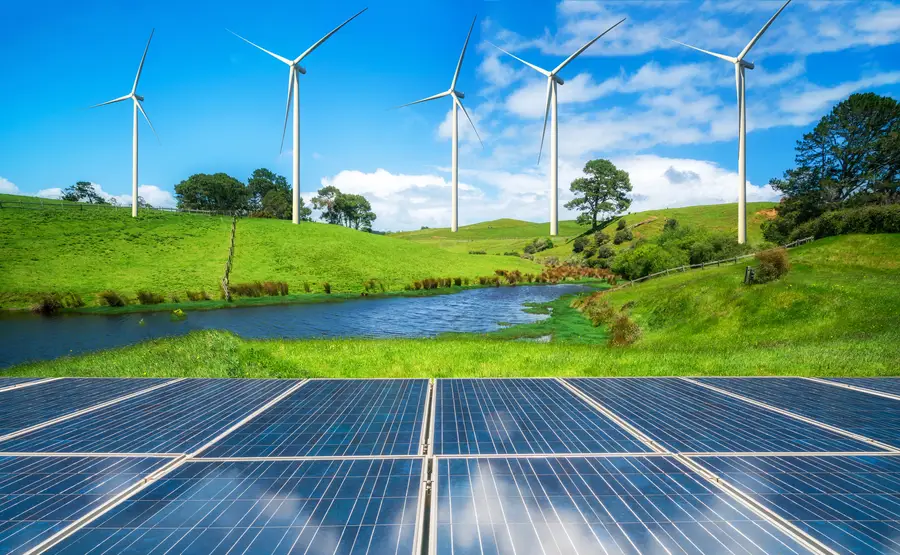Insights
Predicting Energy Outcomes with MEEDE

Need to know the economic, environmental, and engineering details of every U.S. power plant for energy modeling? We have a dataset for that.
Want to know the electricity sector capital, labor, energy, and materials costs for economy-wide modeling? We have a dataset for that.
The answer is our comprehensive dataset known as MEEDE, short for Micro-level Engineering, Environmental, and Economic Detail of Electricity. Why is a dataset like MEEDE so valuable?
In our estimation, it comes down to the versatility MEEDE provides a broad range of modelers.
The Value of MEEDE
The MEEDE dataset provides a unit-level representation of the United States electricity sector based on publicly available and widely trusted sources.
These disparate sets of engineering, environmental, and economic data—primarily from the Environmental Protection Agency (EPA) and the Department of Energy's Energy Information Administration (EIA)—are used to characterize all utility-scale electric generating units in terms of their:
- Physical inputs of energy;
- Outputs of electricity and pollution;
- Generating and pollution control equipment configurations;
- Economic costs (capital, labor, energy, and materials) associated with their operation.
Through careful mapping of information across datasets, MEEDE combines these individual sources into one comprehensive dataset representing every utility-scale generating unit in the U.S., making it easy for users to leverage all the publicly available data without having to do the work of mapping the data together. What’s more, MEEDE comes in an accessible format that can be easily used by a variety of models and programming languages.
Data-Driven Policy Influence for Clean Energy Outcomes
Understanding the relationship between a dataset and the everyday outcomes it can help influence isn’t always easy. In that sense, MEEDE is no different.
However, what if we told you what MEEDE can be used for? Analysis that leads to:
- Electric vehicle (EV) subsidies
- Reduced energy prices from greater reliance on wind/solar
- Better air quality by retiring fossil plants
In other words, outcomes that result from drastically reducing carbon emissions and lowering the cost of clean energy technologies—much like the groundbreaking Inflation Reduction Act (IRA) aims to do over the next decade.
To be clear, MEEDE wasn’t used to create “the most significant piece of climate legislation in the history of the United States,” as Jason Bordoff, Columbia University's director of global energy policy, said in this piece about the IRA.
But it could’ve been.
At the 41st International Energy Workshop (IEW) earlier this year, a representative from the Department of Energy (DOE) said power sector models, among other tools, were used to craft particular IRA provisions. And when the original version of the bill needed to be modified, these models were used to identify provisions that offered the most efficient ways to make the largest emissions cuts possible.
MEEDE was, however, built for the EPA to use in its economy-wide model. Known as “SAGE,” it simulates what happens to the economy under certain policies that enforce requirements for the likes of EV adoption rates, carbon taxes or carbon caps.
How else can MEEDE help energy modelers? Three scenarios quickly come to mind.
Questions MEEDE Can Help Answer
MEEDE can’t be used to predict the future. But it can be used to provide quite a bit of clarity to a rapidly evolving landscape. For example:
Between now and 2050, how much will the IRA reduce emissions from the power sector?
MEEDE makes it possible to generate more accurate emissions estimates at both the national and local levels because it provides a detailed historical baseline to model from. MEEDE tells us how much greenhouse gas and criteria pollutant emissions each existing generator currently emits, allowing energy modelers to estimate how retirements of these power plants under IRA may impact overall power sector emissions.
With the current energy infrastructure in mind, which US states or regions of the country rely on power plants that are vulnerable to climate change?
Using MEEDE, stakeholders can assess which power plants utilities are currently most reliant on, and whether these power plants are susceptible to climate change related hazards. For example, think of the Texas power crisis in 2021. An electricity model using MEEDE could have predicted power outage scenarios based on power plant vulnerability, allowing utilities to act ahead of time to prevent or at least reduce power outages.
How might the increased adoption of EVs impact emissions from fossil fuel power plants and their surrounding communities?
Due to the increased adoption of EVs, the electrification of commercial and residential buildings, and the industrial production of hydrogen and other fuels, it is reasonable to conclude that the demand for energy will increase in the years to come. However, if utilities don’t decarbonize their electricity generation fleet quickly enough, the increased electricity demand might come from increased use of coal and natural gas power plants. Because of this, air pollution could increase and impact local communities surrounding these power plants. RTI has used MEEDE to estimate the effect of increased power generation from fossil fuel power plants on surrounding communities by modeling which power plants may be called on to generate more electricity under higher EV adoption .
Supporting Future Modeling Work in the Energy & Power Sectors with MEEDE
As you can see, MEEDE can be used to answer a range of questions, largely due to how it takes publicly available data and combines it into one comprehensive dataset. Its easily accessible format makes it usable across a range of programming languages and software, and it’s now available off-the-shelf for energy sector or economy-wide modeling purposes. The future of MEEDE is bright. See for yourself and test out the capabilities today.
Learn more about our climate change analysis tools and software.
Disclaimer: This piece was written by Candise Henry (Senior Energy Specialist) and Shane Weisberg (Environmental Data Scientist) to share perspectives on a topic of interest. Expression of opinions within are those of the author or authors.

